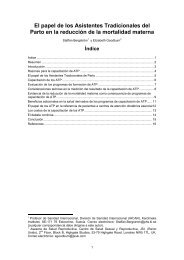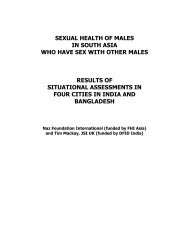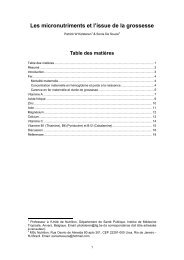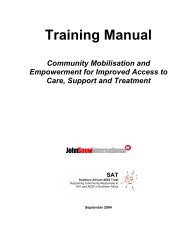book for PDF - John Snow International Europe
book for PDF - John Snow International Europe
book for PDF - John Snow International Europe
Create successful ePaper yourself
Turn your PDF publications into a flip-book with our unique Google optimized e-Paper software.
Part 3Management TechniquesCrop ManagementIntercroppingThe more different plants and animals that you keep, the fewer inputs(such as fertiliser, manure, pesticides or herbicides) you need to use.Growing different crops together helps to reduce pests and diseasesand to improve the soil. During times of drought, frost or pest attack,some crops will be killed but others will survive. When only one typeof crop e.g. rape, is planted in a bed, pests and diseases multiply andsoil nutrients are quickly used up. You have to use fertilizers andpesticides to keep your crops alive.To avoid this, plant many different crops in the same bed. Grow soilimproving crops and trees (see the soil management section) , pest anddisease repellents (see the pest and disease management section), shadeand shelter crops and groundcover crops to reduce erosion, conservemoisture and reduce the space <strong>for</strong> weeds to grow. Intercropping allowsyou to harvest many crops from a small area. If one crop fails you willstill have others to harvest.soil improvementpest controllive fencingGrow plantsthat have morethan one useshade/shelterfibresoil protectionlivestock foddermedicine mulch timberfoodgroundcoverFor more in<strong>for</strong>mation on useful plants turn to appendix 2 on page 8234






